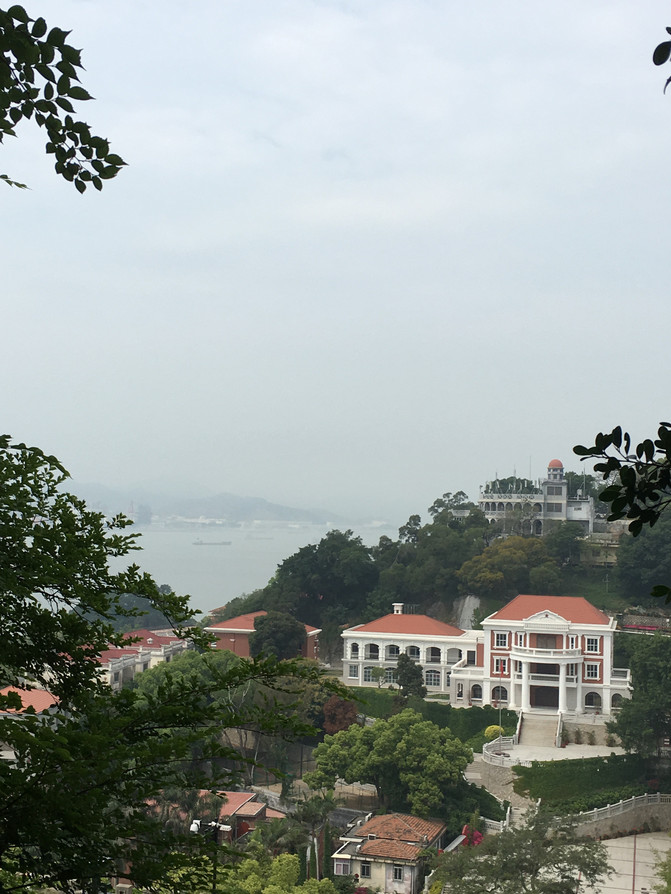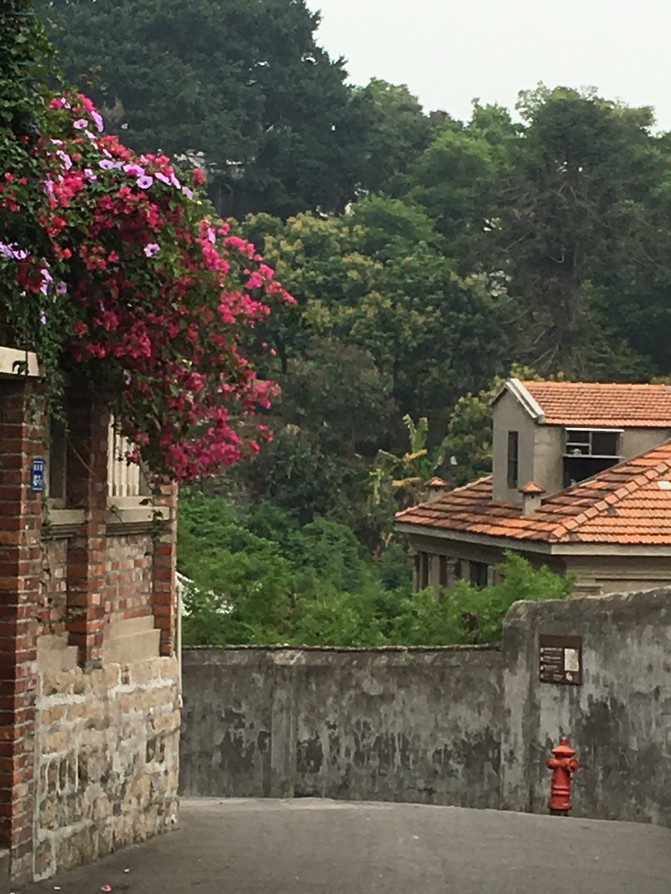Slow trip to Xiamen
1. Xiamen University
Xiamen University, nicknamed the home of "Xiamen City People's Park," is a rare place that integrates scenery, history, architecture and culture. This is why I listed it as my first choice for visiting Xiamen. Here, you can experience the charming scenery of the most beautiful campus in the country, be moved by the pure heart of patriotic overseas Chinese leaders, enjoy the architectural art of combining Chinese and Western countries, and appreciate the ubiquitous fragrance of books. Wandering around, it is easy to linger and you will only feel that time passes too fast.
Let's start with the scenery.
As one of the most beautiful universities in the country, Xiamen University does not have a false reputation: the most well-known Furong Lake is sparkling and the lake is lush, like a pearl inlaid in the center of the campus. Strolling by the lake, the breeze is blowing, and everything you see is beautiful. Facing Furong Lake, the Song 'en Building Group with Jiageng architectural characteristics has been removed and unfolded with "one master and four slaves", and the reflection formed has a unique charm in the water. On the lake, elegant black swans swim around without being afraid of strangers at all. On the other side of the lake is the Science and Art Center (Hanming Building) surrounded by green trees and with a unique slope top shape.


In addition to Furong Lake, Shangxian Field is also a good place to go. It is the main stadium of Xiamen University. It gets its name because the stadium and stands are arc-shaped, just like the first quarter moon. Looking up from the winding field, the Jiannan Building Group, which presents a strong Jiageng architectural style, is also in a "one master and four slaves" layout. The five buildings stand on the hillside and are arranged in an arc under the blue sky and white clouds, giving people a sense of beauty.

Of course, there are many places to visit Xiamen University. For example, the Furong Tower Group, which is also located on Furong Lake and is full of history, the Siyuan Valley (Lovers Valley), which is famous for its tranquility, and the Baicheng Beach, which can be reached from the north gate... These are just waiting for you to discover.
While appreciating the scenery, let us also look back at history so as to better enter this century-old institution and understand its past and present.
Drinking water and thinking of its source, Xiamen University today cannot be separated from its founder, Mr. Chen Jiageng, who is known as the "flag of overseas Chinese and the glory of the nation." He was respectfully called the "school owner" by Xiamen University people. At the age of 17, he went to Singapore from his hometown of Jimei Society in Fujian to study business. By the time he was in his 40s, he was already a famous "rubber king." While commercial success, Tan Jiageng regards donating money to run schools and giving back to society as his own responsibility. After successfully establishing Jimei School Village, 47-year-old Chen Jiageng founded Xiamen University in 1921."When foreign ships travel to and from Xiamen Port, they can see a spectacular university at a glance from the sea." For 16 years, Tan Kah Kee supported it alone and devoted everything to the first university founded by overseas Chinese."I would rather have Xiamen University than a building." In the end, because the company he ran was on the verge of bankruptcy due to the economic crisis, the funding for running schools was unsustainable. In order to "avoid accidentally hitting young people", Xiamen University unconditionally dedicated to the then National Government in 1937.
After Xiamen University was changed to a "national" state, Chen Jiageng still paid close attention to its development as before. In 1950, 76-year-old Tan Jiageng was invited to return to China to settle down and hold important positions. While actively participating in politics, he used his huge influence among overseas Chinese to raise funds from overseas relatives and friends to invest in the expansion of Xiamen University. In the process of building Xiamen University, a unique "Jiageng style building" was gradually formed, which was compared to "wearing a suit and wearing a bamboo hat", that is, the building presents a Minnan style roof and a Western-style house, and the group structure is "One master and four slaves" lined up, with the main building and slave building mainly in Chinese and Western styles respectively. Qunxian Buildings and Jiannan Buildings are representative works of different periods. In 1961, Tan Jiageng passed away at the age of 87 and enjoyed the honor of a state funeral and was buried in his hometown "Aoyuan". In 1990, in order to commemorate and commend his outstanding contribution, the International Minor Planet Center named an asteroid "Chen Jiageng Star".

2. Gulangyu
Compared with Xiamen University, Gulangyu Island is more well-known in the tourism industry. As early as 2005, it was rated first by China National Geographic as the "Most Beautiful Urban area in China". In 2017, after "Gulangyu: Historical International Community" was included in the World Cultural Heritage List, it became even more famous and crowded with tourists.

Gulangyu Island, which faces Xiamen Island across the sea, is known as the "Garden on the Sea". After the Opium War, Xiamen became one of the treaty ports that was forced to open. Gulangyu Island, with its superior geographical environment, beautiful scenery and pleasant climate, was designated as a public concession. Many countries such as the United Kingdom and the United States set up consulates on the island, founded churches, schools, hospitals, etc., and built many residences and villas. These buildings all have a clear style of the country where they are located. Many overseas Chinese with successful careers also regard Gulangyu as the best place to return to their country, and have built houses on the island that are either in Southeast Asian style or imitating foreign-style houses. This is why Gulangyu is now full of historical buildings of various styles and is known as the International Architecture Expo. In addition, the settlement of Chinese and Western cultures and the integration and development of Chinese and Western cultures on the island have objectively created a strong artistic atmosphere in Gulangyu, making it enjoy the reputation of "Island of Piano" and "Hometown of Music". These factors have also become bonus points for his award as a World Cultural Heritage.

If you travel to Gulangyu, there are two tips.
One is to stay for one night. Because the beauty of Gulangyu is not only among popular attractions, but also hidden in a corner waiting for you to discover. For example, when tourists have not yet reached the island in the morning, Gulangyu Island at this time is like a veiled girl, with a tranquility that cannot be experienced during the day. You can only feel this firsthand if you live on the island and can get up early. In addition, you can only use ferries to and from Gulangyu, and there is a time requirement. It will be relatively rushed to and from Gulangyu that day. Many places can only be seen at a glance, and it is difficult to enjoy the leisurely and slow pace unique to Gulangyu.


The second suggestion is to have a pair of suitable shoes ready. Because the island relies entirely on walking, if your shoes are not reliable, you will have a hard time.

Okay, after so much preparation, let's get to the main topic. There are many scenic spots in Gulangyu. If you can't arrange the time, I suggest you at least go to Shuzhuang Garden and Riguangyan.

1. shuzhuang garden
The garden is located on the southeast coast of Gulangyu Island, facing the sea and backed by Sunguang Rock. It was originally a private garden and was named by the owner after the homophonic sound of its characters. The whole park is divided into two major parts with a total of ten scenery. There are towers, pavilions and pavilions in the park, small bridges and flowing water, and green trees and red flowers. The garden is characterized by being built by the sea, combining dynamic and static, and seeing the big from the small. The courtyard itself is dominated by tranquility, but because it is close to the sea, the waves beat the shore, and there is stillness in the movement, and there is movement in the stillness. The garden and the sea are integrated, just like the couplet in the garden,"There is a sea to pillow the mountains to win, and planting flowers and bamboos to comfort the feelings." The garden is not large in area, but the designer is clever, making full use of the size of the terrain, adapting measures to local conditions, and rationally arranging it. The landscape in the garden has no sense of duplication and redundancy, making the small and exquisite garden look calm and elegant, which is amazing.


2. sunlight rock
Riguang Rock is the highest peak on Gulangyu Island. On top of it is a huge stone with a diameter of more than 40 meters standing tall in the sky, making it natural. Climbing up the ladder, you can see many cliff inscriptions from past dynasties along the way. By the time you reach the summit, you will have a panoramic view of Gulangyu and Xiamen Twin Towers. There is a local saying that "if you don't climb Riguang Rock, you won't go to Xiamen."


Here, the slow three-day tour of Xiamen is over. How is it? If you don't think it's enough, then "seeing it is better to hear about it" and go there in person. Maybe you will meet me there again?
Next Article:Jinyan, the old brand that Xiamen people are most familiar with. I didn't expect you to be such a hotel.
